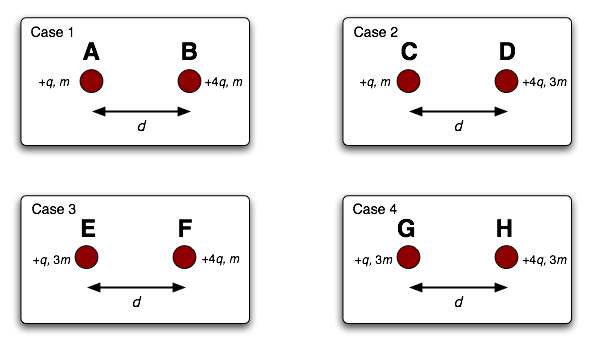
Teaching Physics with the Physics Suite
Edward F. Redish
Home | Action Research Kit| Sample Problems | Resources | Product Information
Problems Sorted by Type | Problems Sorted by Subject | Problems Sorted by Chapter in UP
 |
Teaching Physics with the Physics Suite Edward F. Redish Home | Action Research Kit| Sample Problems | Resources | Product Information |
Problems Sorted by Type | Problems Sorted by Subject | Problems Sorted by Chapter in UP |
In each of the four cases shown below, a particle of chage +q is placed a distance d from a particle of charge +4q. The particles are then released simultaneously. The masses of the particles are indicated in the diagram.

Rank the magnitude of the acceleration of each particle just after it is released from greates to least. Use the following notation: A>B=C>D means A is greater than B which is equal to C which is greater than D. If any or all of the accelerations are zero specify that explicitly. If the ranking of the magnitude of the accelerations is not possible, state that. In any case, explain your reasoning carefully.
* From C. Hieggelke, D. Maloney, S. Kanim, and T. O'Kuma, E*M TIPERS (Prentice Hall)
Not finding what you wanted? Check the Site Map for more information.
Page last modified February 18, 2006: E32